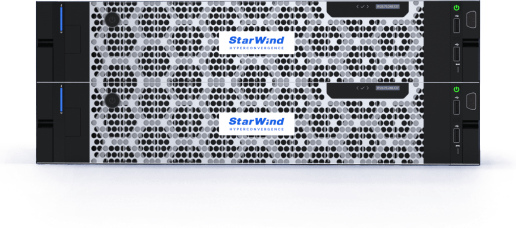Looking for a VMware replacement? With licensing changes shaking things up, now’s the time to explore your options. We’ve analyzed top alternatives, covering features, integrations, and ecosystem support.
Given a lot of the recent changes to the VMware portfolio and licenses, many organizations are now evaluating other options to host their virtualized workloads. Therefore in this article, I wanted to go into what alternatives there are? And of other considerations you need to take before changing to another platform.
Key Considerations Before Switching Hypervisors
Before we consider the alternatives, it is important to understand that changing hypervisors can also impact other products that we are using. Many products today rely on specific hypervisor APIs, features and integrations, which may not be available on other platforms.
Some examples:
- Backup services like Veeam, which either use APIs or rely on installed agents to manage snapshots and data copies.
- VDI services such as Omnissa Horizon and Citrix Virtual apps and desktop.
- Storage solutions like CSI drivers for Kubernetes and other 3.party storage solutions. Or providing fileshare capabilities directly from VSAN.
- Networking appliances such as F5, NetScaler, Cisco, and Palo Alto.
- Security tools like Trend Micro, which connect directly to network APIs.
- Monitoring tools that integrate with your current platform and using VMware specific APIs.
While many vendors like Veeam support multiple hypervisors this does not apply to all 3.party software that integrates with the hypervisor.
Also if you are using features like VSAN and NSX, well then you also need to consider what kind of alternatives there are out there and if so how many features they have, but also one needs to understand what is actually required.
Therefore, it is important to note that moving to another virtualization platform isn’t just about migrating VMs – it’s about ensuring that critical services, integrations, and security features will continue to work in the new environment.
Top VMware Alternatives
Below are some of the most popular alternatives to VMware:
- Proxmox
- XCP-ng
- XenServer
- Hyper-V
- Azure Local
- Nutanix
- KVM
- Kubevirt
From a high-level perspective:
- Proxmox and Nutanix AHV are KVM based hypervisors while XCP-ng and Xenserver are based upon Xen.
- Azure Local is the same as Windows Server with Hyper-V but is a pure HCI based offering compared to Hyper-V.
- Kubevirt is an extension to Kubernetes and allows you to manage virtual machines as Kubernetes resources.Kubevirt only makes sense if your organization has gone the route with cloud-native and only have a few set of virtual machines that for legacy reasons cannot be converted to run as a container.
- XenServer is available for customers that have Citrix workloads.
- Nutanix AHV is Nutanix’s own hypervisor, but Nutanix as a distributed storage service can run across both AHV, VMware and Microsoft.
Feature Comparison of VMware Alternatives:
| Feature | Proxmox | Azure Local / Hyper-V | Kubevirt | Nutanix AHV | XenServer |
|---|---|---|---|---|---|
| Type | Open-source | Proprietary | Open-source | Proprietary | Open-source |
| Virtualization | KVM & LXC | Hyper-V | KVM-based, runs on Kubernetes | KVM-based | Xen-based |
| Air Gap Support | Yes | No (Unless you run Hyper-V natively) | Yes | Yes | Yes |
| SDN Capabilities | Yes | Yes | Yes (leverages Kubernetes networking) | Yes | No |
| SDS Capabilities | Yes (via Ceph) | Yes | Yes (via Kubernetes storage classes) | Yes | No |
| Live Migration | Yes | Yes | Yes | Yes | Yes |
| High Availability | Yes | Yes | Yes | Yes | Yes |
| Storage Types | Local, SAN, NAS. SDS | Local, SAN, NAS, SDS | Local, SAN, NAS, VSAN (SDS) | Hyperconverged | Local, SAN, NAS |
| Backup Solutions | Built-in & 3rd party | 3rd party | 3rd party | 3rd party | 3rd party |
| Clustering | Yes | Yes | Yes | Yes | Yes |
| Container Support | Yes (LXC) | Yes (AKS) | Native | Yes (NKE) | No |
| GUI Management | Yes | Yes | Yes | Yes | Yes |
| vGPU Support | No | Yes (GPU-P) NVIDIA | Yes | Yes | Yes |
| API Support | Yes | Yes | Yes | Yes | Yes |
When looking at the ecosystem of 3.party tooling such as backup, monitoring and security features majority of them support Microsoft, while Nutanix in a good second place. More backup vendors also now support Microsoft, Nutanix and even KVM such as Proxmox. Vendors like Veeam recently added support for it.
In-Depth Look at VMware Alternatives
Nutanix AHV
- Nutanix offers some SDN capabilities through their Flow product.
- It has good backup support from various vendors, but getting Nutanix to run on existing hardware isn’t always straightforward.
- Nutanix’s built-in hypervisor, AHV, is based on KVM but is managed through their dedicated management interface.
- They have an easy way to migrate existing virtual machines from VMware to run on their own platform.
- Not that wide support for 3.party appliances.
KVM (Kernel-based Virtual Machine)
- KVM is an open-source alternative but comes with limited integrations and backup vendor support.
- While it lacks robust support options directly from Red Hat, third-party vendors in some regions may offer commercial support.
- Despite these limitations, KVM has proven stability, especially as it’s used in large-scale environments such as Nutanix AHV and AWS.
Citrix XenServer
- XenServer provides solid hardware support and accommodates various GPU configurations.
- However, major backup vendors offer limited support for XenServer, making backup management more challenging.
- Tools like Xen-Orchestra can improve backup capabilities and provide a better management interface.
- Unlike VMware’s VSAN, XenServer lacks a software-defined storage (SDS) solution and has no built-in SDN capabilities.
- Due to these gaps, the XenServer ecosystem is notably smaller than competitors.
Proxmox
- Proxmox is an open-source solution built on KVM.
- It includes its own backup tool and offers commercial support directly from Proxmox.
- While Proxmox doesn’t natively include SDS capabilities, users can integrate solutions like Ceph for distributed storage.
KubeVirt
- KubeVirt is designed for managing VMs within Kubernetes environments.
- In KubeVirt, VMs are managed as Custom Resources and controlled via Kubernetes’ native orchestration capabilities.
- While KubeVirt is ideal for cloud-native environments with a few remaining VMs, it’s not intended as a full-scale virtualization replacement.
Azure Local
- Azure Local is a hyper-converged infrastructure (HCI) by Microsoft that combines Hyper-V with Azure services for management.
- It’s built for hybrid cloud environments, allowing integration with Azure services such as Azure Monitor, Azure Arc, and Azure Backup.
- Backup Support: backup support from vendors like Veeam, Commvault, and Rubrik.
- Storage Capabilities: Azure Local runs on Storage Spaces Direct (S2D), a software-defined storage (SDS storage service across cluster nodes.
- SDN Capabilities: offers native SDN features to manage virtual networking efficiently. However, it is not as easy to manage compared to NSX and AHV Flow.
- vGPU Support: Provides support for NVIDIA and AMD GPUs, making it a strong contender for virtual desktop infrastructures (VDI) or machine learning workloads.
- Air-Gapped Support: Unlike traditional Hyper-V, Azure Stack HCI does not inherently support fully offline/air-gapped environments without additional configurations.
- Management Interface: Managed through Windows Admin Center or Azure Arc, enabling centralized control both on-premises and in the cloud.
Summary
Which of the other platforms one should go with, is not entirely dependent on the features that the other hypervisor provides, but also on the competency required to manage and run it.
If the long-term goal is running cloud-native workloads and the footprint of virtual machines will decline, perhaps Kubevirt is a good alternative. If your goal is more Azure integrated services and management, Azure Local is probably the best alternative.
However the end-goal when considering the alternatives to a VMware based platform should be
- What features are required?
- What can my workloads run on?
- Can I reuse existing hardware?
- What competency do I need?
And then choose your new virtualization platform based upon that.


